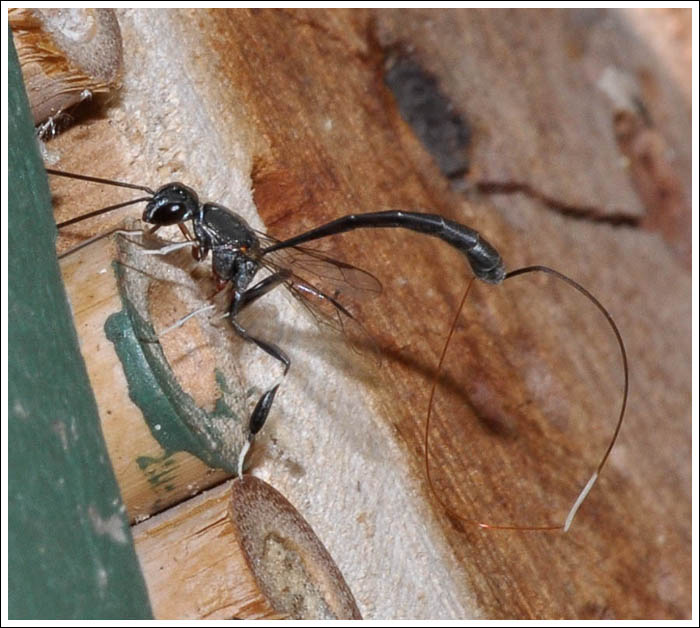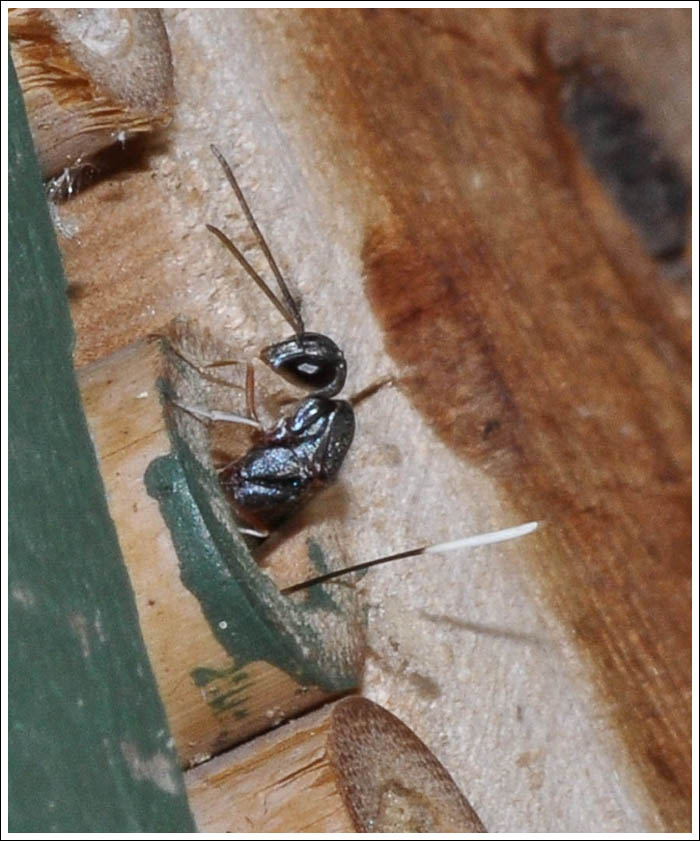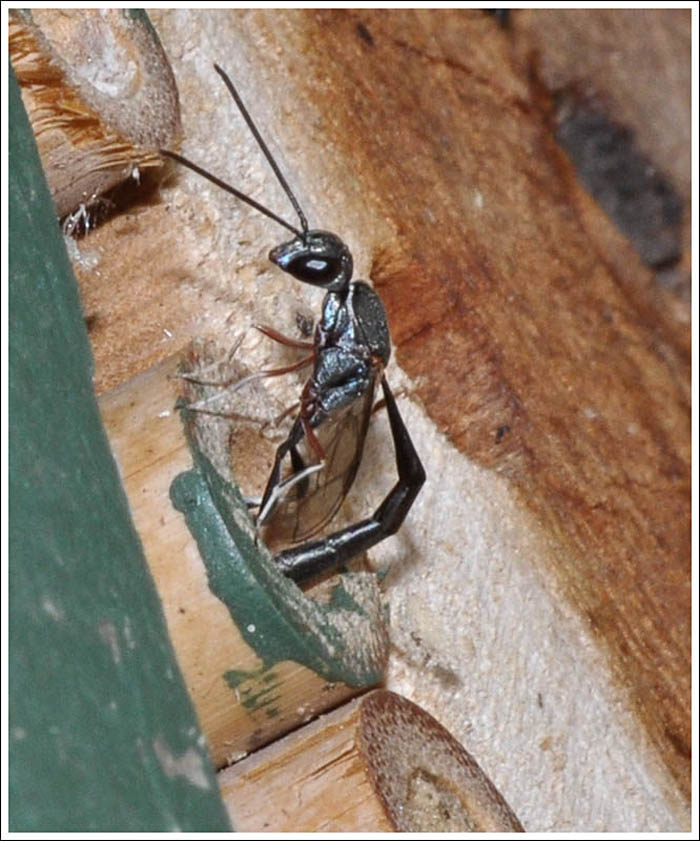This excellent post by Dr. Manu Saunders reminded me of one on the old blog from four years ago, and prompted this re-publishing to perhaps interest new readers.
Gasteruptiidae wasps, are wisps of things that can disappear before your very eyes, and can be extremely hard to photograph as they flicker around, so when I saw one beside the bee house it was inside quickly for the camera. It was still there when I returned, dancing back and forth, so I sat on a chair with the camera ready on the tripod waiting for it to pause. I didn’t know at the time that they are parasitic on solitary bees and wasps and the food for the young, but that fact soon became clear as the series of photographs shows. The wasp finally landed at one open cane among several sealed ones, checking it out thoroughly.
This cane must have been an unsealed brood chamber, because things really got interesting. These wasps seem to have a double barrel ovipositor, the one with the white tip, and another very thin red one with which it touched the white tip. When flying, the two are held together with the red one virtually impossible to see. It can just be seen in the fourth shot, although not sharply as the flickering ovipositor is slightly blurred.

I can only surmise that it was getting an egg, because it then inserted the red ovipositor into the cane, folded the white-tipped one along its back, and disappeared upside down into the cane.


A short time later the wasp backed out and was gone, with I presume its egg laid and a masked bee doomed to never see the light of day.







